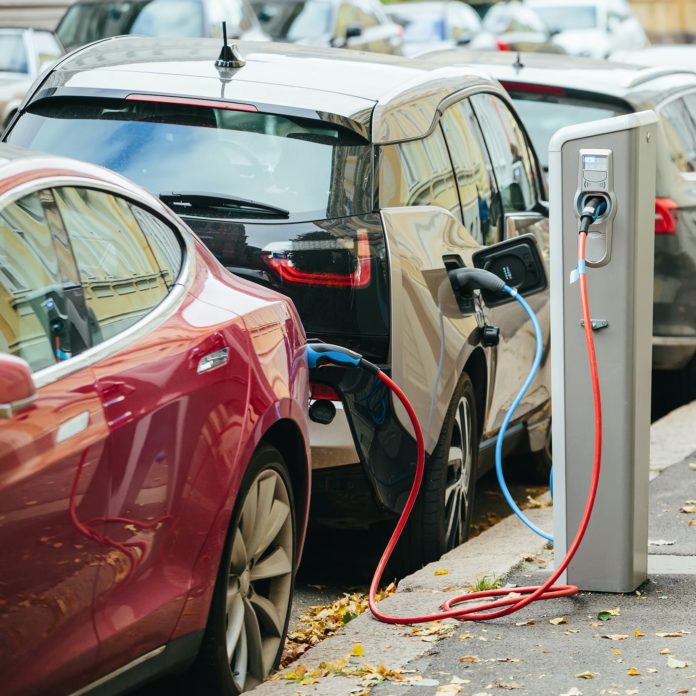For many Americans, electric vehicles are alluring up until the point they think about taking it on a long road trip.
A gas powered car will likely let them drive a median of 400 miles on a full tank – and a refill takes minutes. A full charge on an electric vehicle is more likely get them somewhere between 200 to 300 miles, and could take upward of 15 to 3o minutes of charging before hitting the road again.
That’s one of the major challenge facing politicians and car companies attempting to increase electric vehicle adoption: a skeptical consumer base willing to find any reason to not make the switch.
In a report released this week, government researchers said they have found a way to charge electric car batteries up to 90% in just 10 minutes. The method is likely five years away from making its way into the market, scientists said, but would mark a fundamental shift.
“The goal is to get very, very close to [times] you would see at the gas pump,” said Eric Dufek, a lead author of the study and scientist at the Idaho National Laboratory, a research center run by the Department of Energy.
The report comes as the Biden administration takes on a daunting task: trying to wean America off gas-guzzling cars and push them toward electric vehicles. Though billions of government dollars are being poured into the effort, electric vehicles are still seen as elitist, unreliable and cumbersome to charge – making people hesitant to change.
Currently, car manufacturers and public charging stations use multiple kinds of chargers that offer varying levels of recharge times.
The slowest, known as level 1 chargers, can recharge an electric vehicle battery in 40 to 5o hours, according to the U.S. Department of Transportation. Some of the fastest, known as direct current chargers, can charge a battery up to 80% in 20 minutes to an hour.
Tesla’s vast supercharger network can provide 200 miles of charge in 15 minutes, the company said. But the equipment it uses makes it off limits to other electric vehicles in the United States. (Later this year, Tesla will release supercharging equipment that non-Tesla drivers can use, the White House said in a June statement.)
But the race to super charge electric vehicles has faced obstacles over the past decade. At issue is the delicate balance of trying to charge an electric vehicle battery quicker, but not doing it so fast that a rapid charge does long-term damage to the battery or plays a role in causing them to explode. Charging electric batteries fast can cause damage, reducing the battery’s life span and performance, scientists said.
“You’ve had batteries when you first got it, they were great, but after a couple years or a few charge cycles, they don’t perform as well,” said Eric D. Wachsman, director of the Maryland Energy Innovation Institute, an energy research organization at the University of Maryland.
To try to solve this, Dufek and his team used machine learning to figure out how batteries age when charging fast. Their algorithm was trained to analyze 20,000 to 30,000 data points which indicated how well the battery was charging and whether it was aging or degrading.
The methods they’ve found can charge an electric vehicle battery up to 90% in 10 minutes, Dufek said, but they hope to do better. In the next five years, Dufek’s team is striving to find a way to charge batteries up to 20 miles per minute, far surpassing the performance of top performing super chargers, which hover around 10 to 15 miles per minute.
“I think we can get there,” Dufek said.
Wachsman said the new research is helpful for the field. “Not too fast, not too slow,” he said of Dufek’s charging approach. “It’s just right in that Goldilocks [zone].”
But the bigger benefit, he said, would be if this method spurs car companies to make electric vehicles with smaller batteries, since they’d now have batteries that could be charged quicker and allow consumers to feel less worried about stopping periodically to get a quick recharge.
“Smaller batteries are cheaper cars,” he said.
There are other problems facing the industry. J.D. Power and Associates said many electric vehicle customers aren’t satisfied with public charging stations, notably because units malfunction or are out of service.
“Everyone knows that the landscape of gas stations is focused on convenience – readily available, fast fueling and quick convenience items,” Brent Gruber, executive director of global automotive at J.D. Power said in a statement. “No matter how fast their vehicle charges, EV owners still indicate they need more options for things to do during each charging session to enhance convenience and fill the down time.”
Marc Geller, a spokesman for the Electric Vehicle Association, an industry nonprofit, said that it’s largely a perception that quicker charging times are a large barrier for customers to not purchase electric vehicles. “That perception is obviously both true and largely irrelevant,” he said. The larger issue, Geller added, was that demand is outstripping supply.
Most consumers, he said, will opt to charge their cars at home, given that it’s more convenient and less expensive than public charging stations, which charge more for power than utility companies.
“There is just nothing more reliable or lower cost than charging at home,” Geller said.
(c) 2022, The Washington Post · Pranshu Verma
Source: Matzav
